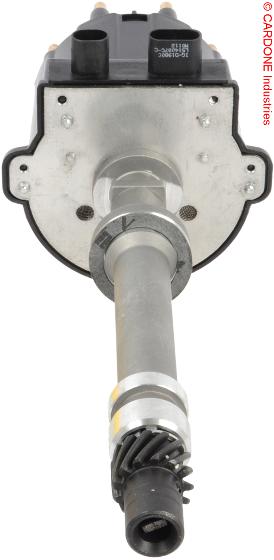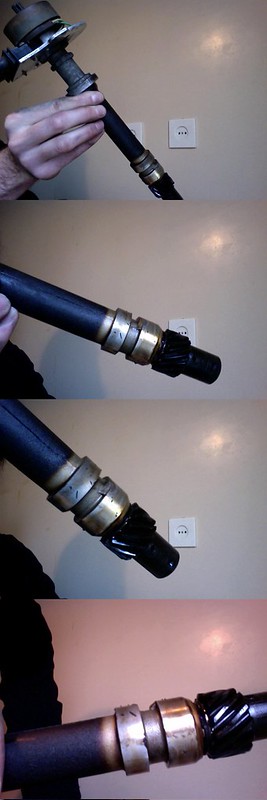I think I've spotted the gremlins in action.
I took some data logs using the venerable
WinALDL during my test drives (on 2013-05-04 and today, 2013-05-08), but I only bothered to analyze them now. The graphing software I used for these pics is called
ALDLView.
Logs from 2013-05-04
This time I had the crappy ignition coil in.
The battery voltage drops intermittently and often. I suspect these are the same incidents when I've seen the SES light flash and/or the tachometer jump wildly.
If we add more variables and zoom in, we'll see that all values drop to zero simultaneously. Here are Speed (VSS), MAP, RPM and O2 readings in addition to Battery Voltage.
In the second incident, the VSS jumps to 180, but in most of these it drops to zero as well. This matches what I've seen the speedometer do: most of the time it shows a realistic value, but a couple of times it's jumped up randomly.
Here's a sample of the "DRP Occurred" signal (Distributor Reference Pulse). I find it odd that it DRP frequency doesn't correlate with engine RPM.
Logs from 2013-05-08
I made another 16 km (10 mi) test drive today. This is after putting the original ignition coil back in & replacing the vac hoses.
There were only 2 voltage drops, and they happened while the car was still idling on the lot (pic below, speed zero, CTS rising). All in all performance felt "normal", there were some random tachometer jerks still.
2nd part of the test drive. The battery voltage didn't drop at all (according to the ECM), so ALDLView scales the white line differently.
I saw one SES flash, though. This happened on WOT (wide open throttle) acceleration in the middle of the graph.
Here's a closeup of the WOT part, i.e. where TPS (throttle position sensor) jumps to 100%. The speedometer also jumped almost 45 degrees upwards and the tach was acting up. The car accelerated nevertheless (yay). Right before flooring the pedal, I saw the tach jump a couple of times, this might match the two minor voltage drops just before the WOT part.
Maybe the acceleration itself shook some contacts loose and this caused the ECM to reset for a short moment?
Also, here's another graph of the DRP flag:
Odometer: 225 974 miles.















